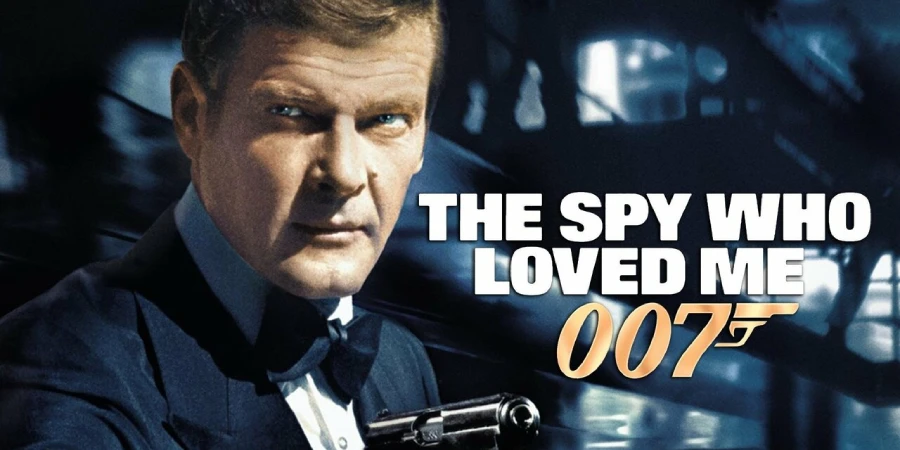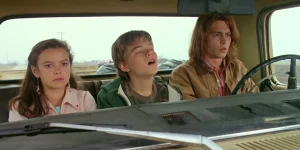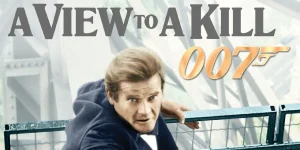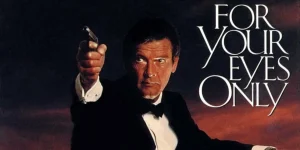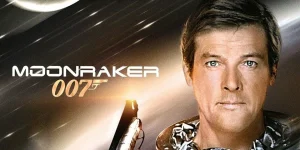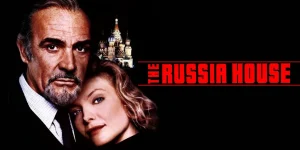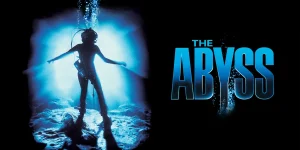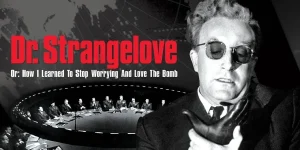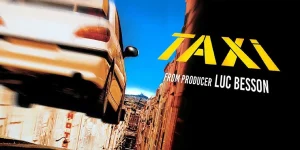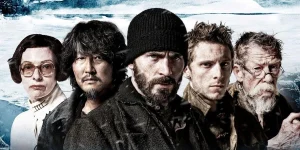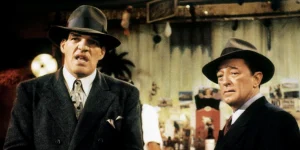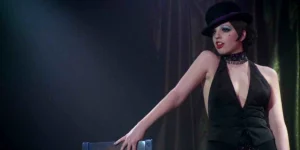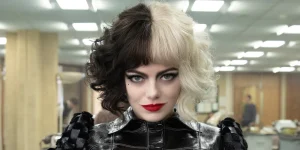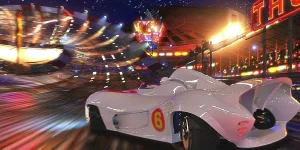The Spy Who Loved Me is the 10th James Bond film, released in 1977, directed by Lewis Gilbert and starring Roger Moore in one of his most celebrated turns as 007. Known for its blend of Cold War espionage, underwater action, and iconic gadgets, it remains a fan favorite for its large-scale production and unforgettable Bond moments.
Table of Contents
ToggleDetailed Summary
Opening Ski Chase and the Union Jack Parachute
The film opens with British and Soviet nuclear submarines mysteriously vanishing. We first meet Bond on a mission in Austria, pursued by assassins on skis. In one of the most iconic openings in Bond history, he skis off a cliff and deploys a parachute emblazoned with the Union Jack, cementing Roger Moore’s suave-yet-playful style.
The Threat of Karl Stromberg
The villain, Karl Stromberg (Curt Jürgens), is a reclusive shipping magnate with a massive underwater lair called Atlantis. He dreams of creating a new civilization beneath the sea after triggering a global nuclear war. Stromberg orchestrates the capture of both British and Soviet submarines to begin his apocalyptic plan.
Bond Teams Up with a Soviet Agent
Bond’s mission to investigate leads him to Anya Amasova (Barbara Bach), a skilled KGB agent codenamed “Triple-X.” Initially, they clash, but soon they are forced to cooperate after discovering their governments have ordered them to work together to recover the missing submarines. The stakes rise when Anya learns Bond killed her lover during an earlier mission.
Encounters with Jaws
One of the most memorable additions to the Bond universe, Jaws (Richard Kiel), makes his first appearance. Standing over seven feet tall with metal teeth, Jaws is both terrifying and oddly comedic. He becomes Bond and Anya’s relentless pursuer, surviving multiple assassination attempts and impossible situations.
Discovery of Stromberg’s Plan
Bond and Anya discover that Stromberg has captured the submarines to launch their nuclear missiles at major cities—one American, one Soviet—triggering mutual destruction. With humanity wiped out, Stromberg plans to repopulate the world from his undersea base.
Movie Ending
Bond and Anya are captured and taken to Stromberg’s underwater fortress. Stromberg attempts to kill Bond by sending him down a tube into a shark tank—a nod to earlier Bond films—but 007 escapes. Bond then infiltrates the control room and manages to redirect the nuclear missiles so that each submarine destroys the other instead of their intended targets.
The climax features an all-out battle between Stromberg’s heavily armed forces and the freed crews of the captured submarines. Bond kills Stromberg in his lavish dining room by shooting him through a pneumatic tube system and finally rescuing Anya from being executed.
The film closes with the classic Bond romantic finale: 007 and Anya are found in an intimate moment inside a tiny escape pod, prompting the British Minister of Defence to utter the now-famous line, “Bond is on a mission… of a different kind.”
Are There Post-Credits Scenes?
No, The Spy Who Loved Me does not have a post-credits scene. However, as was customary at the time, the end credits confirm that “James Bond will return,” teasing the next installment (Moonraker, 1979).
Type of Movie
Spy thriller, action-adventure, and Cold War-era espionage with a heavy dose of classic Bond glamour and over-the-top villainy.
Cast
- Roger Moore as James Bond 007
- Barbara Bach as Anya Amasova / Agent Triple-X
- Curt Jürgens as Karl Stromberg
- Richard Kiel as Jaws
- Walter Gotell as General Gogol
- Geoffrey Keen as Sir Frederick Gray
- Bernard Lee as M
- Desmond Llewelyn as Q
- Lois Maxwell as Miss Moneypenny
Film Music and Composer
The score was composed by Marvin Hamlisch, giving the film a slightly disco-infused soundtrack fitting for the late 1970s. The theme song, “Nobody Does It Better” by Carly Simon, is one of the most beloved Bond songs and was nominated for an Academy Award.
Filming Locations
- Egypt – The Pyramids of Giza and Luxor provided the backdrop for several pivotal scenes, adding exotic mystique.
- Sardinia, Italy – Home to the famous Lotus Esprit car chase sequence, including the underwater transformation.
- Pinewood Studios, UK – Hosted the massive purpose-built 007 Stage, where the submarine interior battle was filmed. This set was the largest sound stage in the world at the time.
Awards and Nominations
- Nominated for 3 Academy Awards: Best Art Direction, Best Original Score, Best Original Song (“Nobody Does It Better”).
- Nominated for BAFTA Awards in Production Design and Original Music.
Behind the Scenes Insights
- The Lotus Esprit’s transformation into a submarine was achieved using several different vehicles—some functional, some mock-ups.
- The “Union Jack parachute” stunt was performed by skier Rick Sylvester, filmed at Mount Asgard in Canada.
- Jaws’ metal teeth were so uncomfortable that Richard Kiel could only wear them for seconds at a time.
- The massive 007 Stage at Pinewood was built specifically for this film and became a lasting legacy for future Bond productions.
Inspirations and References
The plot was loosely inspired by Ian Fleming’s novel The Spy Who Loved Me, though only the title and some character names were retained. The story was entirely reimagined for the screen, incorporating original villains and settings.
Alternate Endings and Deleted Scenes
No official alternate ending was filmed, but early drafts reportedly had Stromberg die in a more elaborate underwater explosion sequence. Some minor dialogue scenes between Bond and Anya were cut for pacing.
Book Adaptations and Differences
Ian Fleming’s novel was a more intimate, small-scale story told from a woman’s perspective, with Bond entering late in the plot. The filmmakers opted for a global threat and large-scale action, in keeping with cinematic Bond tradition.
Memorable Scenes and Quotes
Key Scenes
- Union Jack parachute ski jump opening.
- Jaws stalking Bond and Anya among the ruins in Egypt.
- Lotus Esprit transforming into a submarine.
- The climactic battle inside the supertanker’s submarine pen.
Iconic Quotes
- Bond: “Keeping the British end up, sir.”
- Anya: “The mission comes first.”
- Stromberg: “The only hope for the future of mankind is the sea.”
Easter Eggs and Hidden Details
- The Union Jack parachute was a cheeky nod to British pride during a tense Cold War era.
- General Gogol, head of the KGB, would become a recurring ally in later Bond films.
- The Lotus submarine car was nicknamed “Wet Nellie” by the production crew.
Trivia
- Roger Moore considered this his favorite Bond film.
- The budget was significantly higher than previous Bonds, partly due to the scale of the sets.
- The underwater sequences were filmed in the Bahamas to ensure clear visibility.
Why Watch?
It’s one of the most quintessential Bond adventures—exotic locations, larger-than-life villains, outrageous gadgets, and a perfect blend of suspense and humor. If you want to see Roger Moore at the height of his Bond career, this is the one.
Director’s Other Movies
- You Only Live Twice (1967)
- Moonraker (1979)
- Shirley Valentine (1989)

